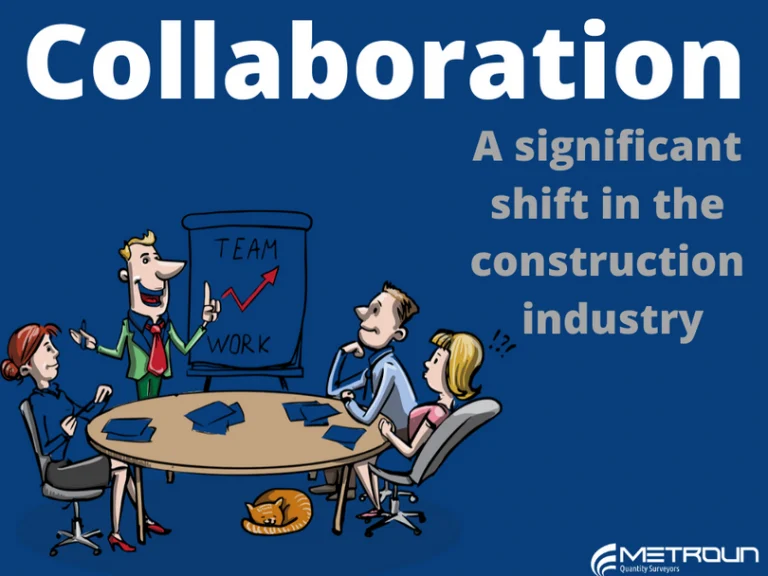The construction industry has been subject to notorious criticism when it comes to productivity and being behind other industries in terms of growth and profit margins. This has been attributed to a multitude of reasons over the years, leading to a proposed solution of making the construction industry more ‘collaborative’. Lets explore collaboration in construction.

Early Calls for Change
Throughout the 20th century, several key reports highlighted inefficiencies in procurement and contracting. The Simon Report (1944) and the Banwell Report (1964) criticised open tendering and traditional procurement methods, particularly in the public sector.
Banwell (1964) even went so far as to describe the industry as having a “rigid adherence to outmoded procedures” and an unwillingness to explore alternative procurement models. Yet, despite these strong words, the general consensus in the literature is that these reports had a limited impact on practice.

The Turning Point: The Latham Report
Things began to shift in 1994 with the publication of the Latham Report. Its message was clear: clients seeking high-quality projects required teamwork above all. This was the first time collaboration was framed not as an ideal, but as an essential for project success.
Later research supported this shift. A study by Hughes et al. (2012) provided survey evidence showing that collaborative working was evolving and gaining traction in the UK construction industry.
Defining Collaboration in Construction
Bouchlaghem (2014) defines collaboration in construction as the “collective work of individuals and groups undertaken with a sense of common purpose and direction within a shared environment.”
In practice, this way of working is far preferable to the messy disputes and claims that have long characterised final account stages under traditional contracts. Industry data reflects this shift: both Tookey et al. (2001) and RICS (2004) noted a movement away from traditional procurement routes towards more collaborative practices.
A survey by CIOB (2010) reinforced this trend, with 64% of practitioners agreeing that greater transparency would benefit the industry by increasing trust and improving project outcomes.
The Challenge of Traditional Contracts
However, as Hughes et al. (2015) observed, the traditional contracts used across the globe and within the UK were designed to control complex webs of organisations and disciplines—not to promote radical new behaviours like collaboration.
This raises the question: how do you embed collaboration into an industry built on adversarial frameworks? The proposed solution has been straightforward, if ambitious: write entirely new forms of contract.
Final Thoughts
The industry has come a long way since the Simon and Banwell reports. Collaboration is no longer just a buzzword; it is increasingly seen as a practical necessity for reducing waste, improving trust, and achieving better project outcomes.
Yet, the challenge remains: how do we move from aspiration to implementation? If traditional contracts cannot support collaboration, then perhaps the future truly lies in creating new models of working—built from the ground up to encourage cooperation, trust, and transparency.
For more construction related articles and further information, please visit metroun.co.uk

Find out more on NEC contracts with our post on How to Manage Risk Effectively in Construction
References
Banwell, H. (1964), The Placing and Management of Contracts for Building and Civil Engineering Work, London: HMSO
Bouchlaghem, D. (2014). Collaborative working in construction. New York, NY, United States: Spons Architecture Price Book.
CIOB, (2010) Procurement in the Construction Industry, A report exploring procurement in the construction industry, United Kingdom
Hughes, D., Williams, T. and Ren, Z. (2012). Differing perspectives on collaboration in construction. Construction Innovation.
Hughes, W., Champion, R. and Murdoch, J. (2015) Construction contracts: Law and Management. 5th edn. London, United Kingdom: Routledge.
Latham Report (1994), Constructing the Team: Joint Review of Procurement and Contractual Arrangement in the United Kingdom Construction Industry. Chair Sire M. Latham. HMSO, London.
RICS (2004) Contracts in Use – A Survey of Building Contracts in Use During 2004, Royal Institution of Chartered Surveyors, Coventry.
Simon, E, (1944) The placing and Management of Building Contracts. The Simon Committee Report, London: HMSO.
Tookey, J, E., Murray, M., Hardcastle, C. and Langford, D. (2001) “Construction procurement routes: re‐defining the contours of construction procurement”, Engineering, Construction and Architectural Management.










